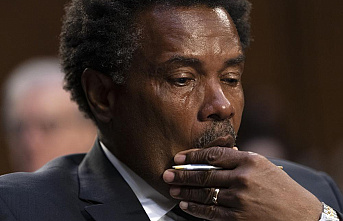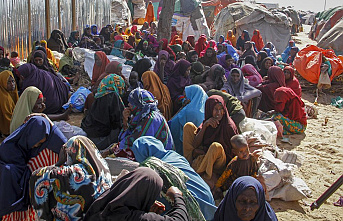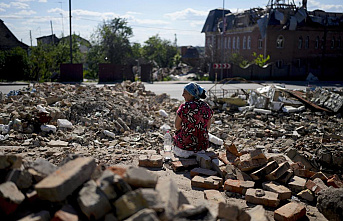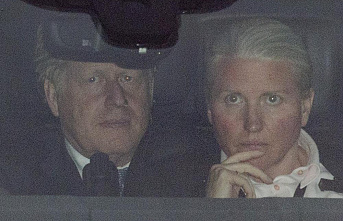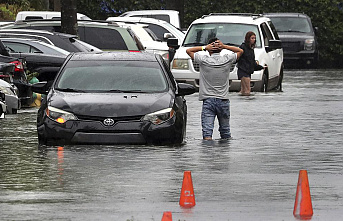it took 109 seconds to change France. On the 7th of January of 2015, the brothers Chérif and Saïd Kouachi stormed the headquarters in paris of Charlie Hebdo and began shooting during a minute-and-49 seconds. The magazine's most irreverent of the country was decimated. France is tipped over with the victims and condemned what was stated as an attack on the freedom of the press. The slogan Je suis Charlie (I am Charlie) spread through the world. What no one could have guessed even is that Charlie was only the beginning. A series of attacks by jihadists throughout the year would transform forever to a country which, five years later, still shaking from the extremist threat has changed in its form, but not your target killer.
“The attack at Charlie Hebdo revealed the importance, the breadth of the networks that jihadists in France”, says Jean-Charles Brisard, chairman of the think tank Center for Analysis of Terrorism (CAT).
Today almost no one is surprised when, walking along the streets of Paris, Marseille or Bordeaux cross with the patrols of soldiers armed to the teeth. It was not always so. The Operation Sentinel, which took out 10,000 military to the streets, was ordered by president François Hollande after the series of bombings that month of January that started with Charlie Hebdo and continued two days later with the attack on a supermarket jewish, where four people were killed before the attacker, Amedy Coulibaly, a follower of the Islamic State that the day before had also killed a policeman on the outskirts of Paris, was shot, as it ended up being their accomplices, the brothers Kouachi.
The annus horribilis of terrorism extremist in France had not done more to start. In February, three soldiers were attacked with a knife in Nice, in front of a jewish center. In April, a computer science student suspected of preparing an attack against a church in Villejuif, a suburb of Paris —where the Friday another radicalized killed to death a man, was arrested after murdering a woman in a parking lot. In June, a dealer decapitated his head, and exhibited his head to a factory in Isère. In August, several passengers were able to reduce to a radicalised heavily armed that he wanted to perpetrate a new massacre in a train, from Amsterdam with destination to Paris. And the worst was yet to come: the night of the 13th of November, three commands coordinated two separate attacks in the French capital —at the Stade de France, in restaurants and bars of This paris and in the concert hall Bataclan— that left 130 dead. The declaration of a state of emergency remained until November of 2017, when part of those rules in extraordinary were converted into law— did not prevent that, eight months later, on July 14, 2016, other terrorist perpetrara a new massacre by launching a truck into the crowd that celebrated the French national day in Nice, causing 86 deaths and more than 400 wounded. From 2015, 255 people have died in attacks in France.
MORE INFORMATION
Twelve dead in an attack in the magazine ‘Charlie Hebdo’ in Paris to Be ‘Charlie Hebdo’ or irreverence in the face of fear ‘Charlie Hebdo’ returns with forceAnd it all started that January 7, 2015, at 11 hours, 33 minutes and 47 seconds, as the director of Charlie Hebdo, Riss, in the book One minute, forty nine seconds, where he reflects on the attack that ended the life of his friends and colleagues —he was injured— and that was changed to France.
“The door is opened. I had the knob in his right hand. The left was occupied in grasp the butt of what visibly was a gun, fully black, with a barrel pointed to the ground. In that instant, all what we understand. It is the end. Our end has come.” At 11 hours, 35 minutes and 36 seconds, the brothers Kouachi came out of Charlie Hebdo. Left behind it a trail of 11 dead —a victim, a policeman, was killed later in the street. Iconic figures such as Cabu, Charb, Tignous or Wolinski have been executed. Another 11 were wounded, as Riss or the journalist Philippe Lançon, who has also recounted their grueling recovery, physical and mental, in another recent book, Le Lambeau (The flap).
“it Was an execution policy,” said Riss in an interview with the group, Lena. “There was an attack blind, was a specific run to, to silence people who had a particular word”.
Five years later, the terrorist threat continues with an appearance and new, but no less dangerous, warns Brisard.
“from 2016, we slip into a terror endogenous, with individuals who react to the propaganda of terrorist groups but motivated by individual aspirations,” he explains by phone. Their methods change. “Today it is very difficult to have access to weapons of war or tutorials for making explosives”. But what is a success of the intelligence services, also is another headache, because now you resort to rudimentary, such as knives, which make difficult their detection. “The threat has evolved, it is diffuse, unpredictable, and that is what makes everything extremely complicated. Before you could identify the individuals (dangerous) for his adherence to groups. Today it is difficult, because you go to the action in an improvised way, with weapons, rudimentary and in many cases are unknown to the intelligence services”.
Date Of Update: 07 January 2020, 03:00

